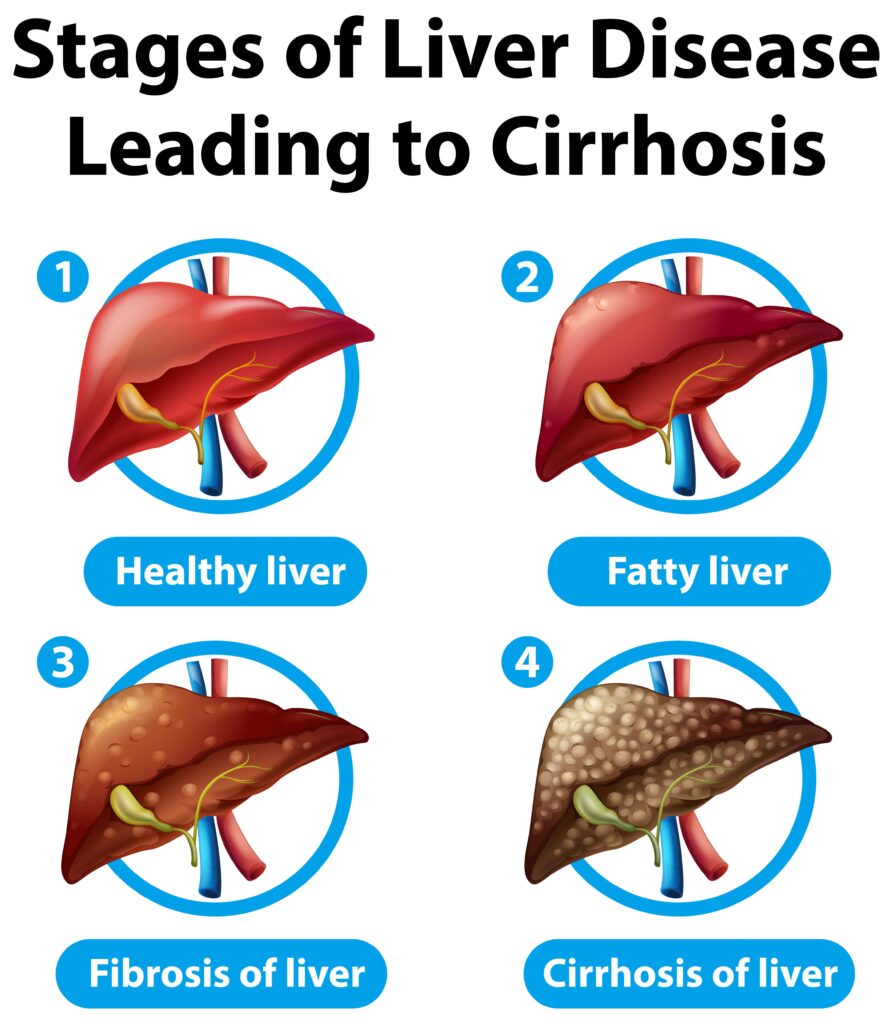A Simple Guide to Fatty Liver Stages and Liver Health
Fatty liver disease, also known as hepatic steatosis, occurs when excess fat builds up in the liver. While a small amount of fat in the liver is normal, excess fat can lead to serious health problems over time. Fatty liver disease often progresses in stages, and understanding these stages is crucial for preventing complications. In this blog, we’ll explore the different fatty liver stages and provide insights into how to manage and prevent this condition.
What is Fatty Liver Disease?
Fatty liver disease refers to the accumulation of fat in the liver cells. It can be classified into two types:
- Alcoholic Fatty Liver Disease (AFLD): Caused by excessive alcohol consumption.
- Non-Alcoholic Fatty Liver Disease (NAFLD): Occurs in people who drink little or no alcohol. It is the most common type of fatty liver disease.
Both types can lead to liver damage if left untreated, progressing through several stages that reflect the severity of the condition.

Stage 1: Simple Fatty Liver (Steatosis)
The first stage of fatty liver disease is known as steatosis or simple fatty liver. At this stage, fat begins to accumulate in the liver cells, but there is no significant inflammation or liver damage. Most people with simple fatty liver are asymptomatic, meaning they may not experience any noticeable symptoms.
Key Features of Simple Fatty Liver:
- Excess fat in liver cells, but no inflammation.
- Generally no symptoms.
- Reversible with lifestyle changes such as a healthy diet and regular exercise.
Although this stage is not dangerous on its own, it is a warning sign that more serious liver problems may develop if left unaddressed. Maintaining a healthy weight and reducing alcohol intake can help reverse simple fatty liver.
Stage 2: Non-Alcoholic Steatohepatitis (NASH)
The second stage of fatty liver disease is known as Non-Alcoholic Steatohepatitis (NASH). At this point, fat accumulation in the liver triggers inflammation, leading to liver cell damage. NASH is more serious than simple fatty liver and can result in scarring of the liver over time.
Key Features of NASH:
- Inflammation and damage to liver cells.
- May cause symptoms like fatigue, abdominal discomfort, or weakness.
- Requires medical intervention and lifestyle changes to prevent progression.
NASH is often diagnosed through blood tests or imaging, as patients may begin to show elevated liver enzymes. If untreated, NASH can progress to more advanced stages, causing irreversible liver damage.
Stage 3: Fibrosis
The third stage of fatty liver disease is fibrosis, which occurs when the inflamed liver begins to develop scar tissue. While the liver can still function at this stage, the buildup of scar tissue (fibrosis) affects its overall efficiency. Fibrosis is a turning point in the progression of fatty liver disease and is more difficult to reverse than the earlier stages.
Key Features of Fibrosis:
- Scar tissue forms in the liver, reducing its ability to function.
- The liver may still be able to regenerate some healthy cells.
- Symptoms may include fatigue, jaundice (yellowing of the skin and eyes), or swelling in the abdomen.
Although fibrosis is a more serious stage, early intervention can prevent further damage. Regular monitoring by a healthcare provider and lifestyle changes, such as a balanced diet and weight management, are essential to halt the progression of fibrosis.
Stage 4: Cirrhosis
The final and most severe stage of fatty liver disease is cirrhosis. At this point, the liver is heavily scarred, and its ability to function is severely compromised. Cirrhosis is irreversible and can lead to liver failure or liver cancer if not treated. People with cirrhosis may require a liver transplant to survive.
Key Features of Cirrhosis:
- Extensive scarring throughout the liver.
- Loss of liver function, potentially leading to liver failure.
- Severe symptoms such as jaundice, ascites (fluid buildup in the abdomen), easy bruising, and confusion.
Cirrhosis can be life-threatening, and the only way to manage it is through medical treatment and, in some cases, liver transplantation. Early detection of fatty liver disease and its management at earlier stages is critical to preventing cirrhosis.
Causes of Fatty Liver Disease
Several factors can contribute to the development of fatty liver disease, including:
- Obesity: Excess body fat is one of the most significant risk factors for fatty liver disease.
- Type 2 Diabetes: High blood sugar levels can lead to fat accumulation in the liver.
- High Cholesterol: Elevated cholesterol levels can contribute to fat buildup in the liver.
- Metabolic Syndrome: A combination of conditions, including obesity, high blood pressure, and insulin resistance, increases the risk.
- Alcohol Consumption: Excessive drinking is a major cause of alcoholic fatty liver disease.
- Medications: Some medications can lead to fat buildup in the liver as a side effect.
Conclusion
Fatty liver disease is a common condition that progresses through several stages, ranging from simple fat buildup to severe liver damage. Understanding the fatty liver stages is essential for taking proactive steps to manage and prevent complications. Early intervention through lifestyle changes, such as maintaining a healthy diet and exercising regularly, can help reverse the early stages of fatty liver disease and prevent its progression to more serious stages like cirrhosis.
Regular monitoring by healthcare professionals and making informed lifestyle choices are the keys to maintaining liver health. If you suspect you may have fatty liver disease, seek medical advice to receive an accurate diagnosis and appropriate treatment.


